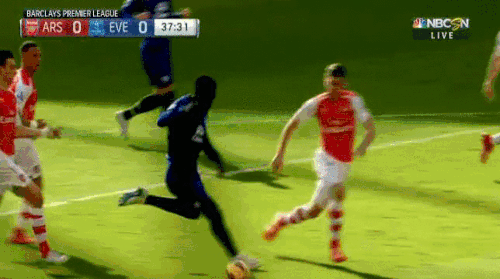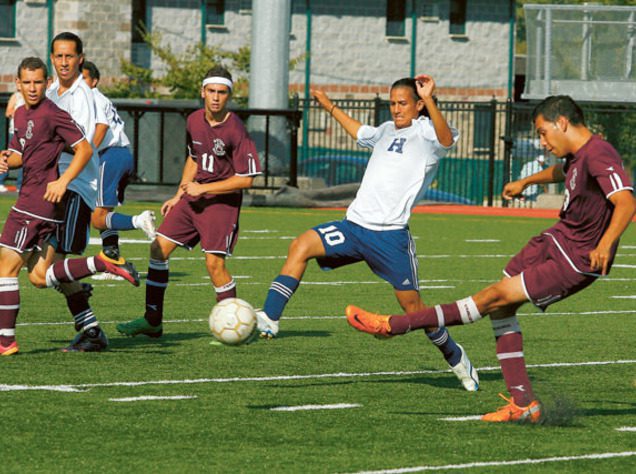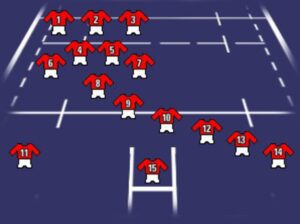The Strategies + Ideals Behind Defending As A Team
For a team to find success, they cannot simply focus on putting the ball in the back of the net. No, in order find that sought after success, a squad must be willing to do the dirty work and defend. If you were to ask somebody how to win a match, the easy answer would be: score more goals to win. However, it would be remiss not to counter that approach by saying that you cannot lose a match without conceding a goal as well.
There are various strategies for defending in soccer, but all of them can be traced back to the basics of pressure, cover, and balance. These terms refer to the positions that soccer defenders should take whenever an opponent is on the ball. If you and your teammates want to become a better defensive unit, take these CoachUp tips and suggestions to heart.
The Basics
- The defender closest to the ball provides pressure.
- The second defender provides cover in case the first defender is beaten one-on-one.
- The third defender provides balance for the defensive back line.
- The third defender should be ready to step up as the new second defender if the first defender is beaten. !

One-On-One Defending
A team will only be able to play as a unit if each defender knows how to defend one-on-one — thus, the key to playing defense is patience. Attackers in soccer love to bait inexperienced defenders into rash, unwise tackles. Becoming a better defender means waiting for attackers to make moves and only making tackles when the ball presents itself. Defenders should stay about three steps from an attacker because it forces the attacker to chose between three options — shoot, pass, or attempting to dribble past the defender.
Theoretically, if the defender has given himself enough space, he should have enough time to block the attacker’s kicks or stay with the attacker step-for-step if he tries to dribble past.
In the first two-thirds, try to push the attacker towards the middle of the field. When attackers come to the middle of the field they have to work through more traffic than if they stay near the sidelines. In the final third, try to force attackers towards the sideline and away from your goal. Guiding attackers towards the corner flags in the final third will prevent them from having shots on goal.
Tracking
Tracking is one of the hardest parts of soccer because of the game’s constant ebb and flow. At times, it seems like a thousand things are happening at once. Yet, it’s still the defender’s responsibility to read and analyze all that information and consistently pick the appropriate course of action. The best defenders are capable of watching the ball and tracking opposition’s runs at the same time. Tracking does not necessarily mean chasing after opponents, chasing a game and players are foolish.
To track a run, in the simplest terms, is to see where they’re running in an attempt to predict what’s next. If an opposing attacker moves into a passing lane, the second or third defender should follow and mark that player. Sometimes, however, forwards make runs to draw the defenders out of position. Defenders need to track each run and be able to judge the amount of danger created by each one. Try thinking about it like this — you wouldn’t bring checkers to a chess match, right? A team’s defense is, obviously, built on a formation and strategy. Whether this means a flat backline, diamond formation, or any other variation will depend on the team; however, the sentiment is the same: there is a game plan in play, so let it play out. That idea may not seem revolutionary or, perhaps, might feel redundant, but let’s break it down:
Zonal Defense
Often enough, teams will play with a zonal defense — meaning that, in most cases, your defenders won’t be marking individual opponents time and time again. In the zonal defense, teams pick up offensive players on the attack based on the aforementioned cover, pressure, and balance method. For everybody not directly impacted by the ball carrier, they must stay in open space and decide when to pick up on an attacking player’s run. These defenders will clog lanes and take up room until they are forced into action and another player will, theoretically, side into that position to make up for the change.
But good defending sides will not chase the game and they won’t get unnerved by non-threatening runs, waiting for the correct time to pounce or tackle. Just as the offense has a strategy applied, so does the defense. If a defender pays attention to everything at once, they’ll often find themselves drawn out of position and concede an easy goal.
And, as the attacker, they’ll hold the immediate advantage because defenders can only anticipate and won’t truly know what’s happening until it happens and they react accordingly. Bad defending teams will forgo their formation and shape the second there is initial distress. When this happens, the offensive team holds all the cards and will dictate the game as they see fit. However, if the defending team has good resolve, they will not simply try to react to the offense as it happens, but will attempt to see what is coming next. If a defender stays focused and ready, they can read a run before it happens, step into the passing lane, and win the ball. Thusly, don’t chase the ball just because it’s the easy solution — that’s playing checkers.
The best teams will, instead, play chess in order to read the offensive movements and attack, preemptively striking within their own strategies before it’s too late. It all comes back to a team’s ability to communicate. No good, strong team defense is possible without resilient communication.
Communication Is Key
Without communication, team defense is impossible. If defenders are not on the same page, then there will be a breakdown and the opposing team will capitalize. For example, the first defender runs to meet the attacker with the ball, he should yell: “I got pressure!” Then, the second defender should move into position behind the first defender, favoring one side. If the second defender says, “I got cover on the left,” the first defender knows to force the attacker to his left and towards his support. Even if the attacker beats him, his teammate will be there to help.
(Related: Read about why warming up is important here.)
Huddle Up
The best soccer teams in the world have defenders that are constantly talking and, in turn, working as one unit. At the youth level, players learn that the most effective defense is to attack the ball whenever the opportunity presents itself. However, as the skill and strategy level on the pitch improves, the less effective that ideal becomes. Teams need to be able to think a step ahead of their opponents and not blindly react to their advances.
By utilizing CoachUp’s tips to become a better 1v1 defender, players ultimately become better team defenders. The better a team is at defending as a unit, by applying pressure, cover and balance, the less goals they’ll concede. The less goals they concede, the more games they’ll win. And then, you’ll finally be playing chess while everybody else plays checkers.
Be prepared for the biggest moments by mastering the small ones off the field.
How useful was this post?
Click on a star to rate it!
Average rating 4 / 5. Vote count: 2
No votes so far! Be the first to rate this post.



